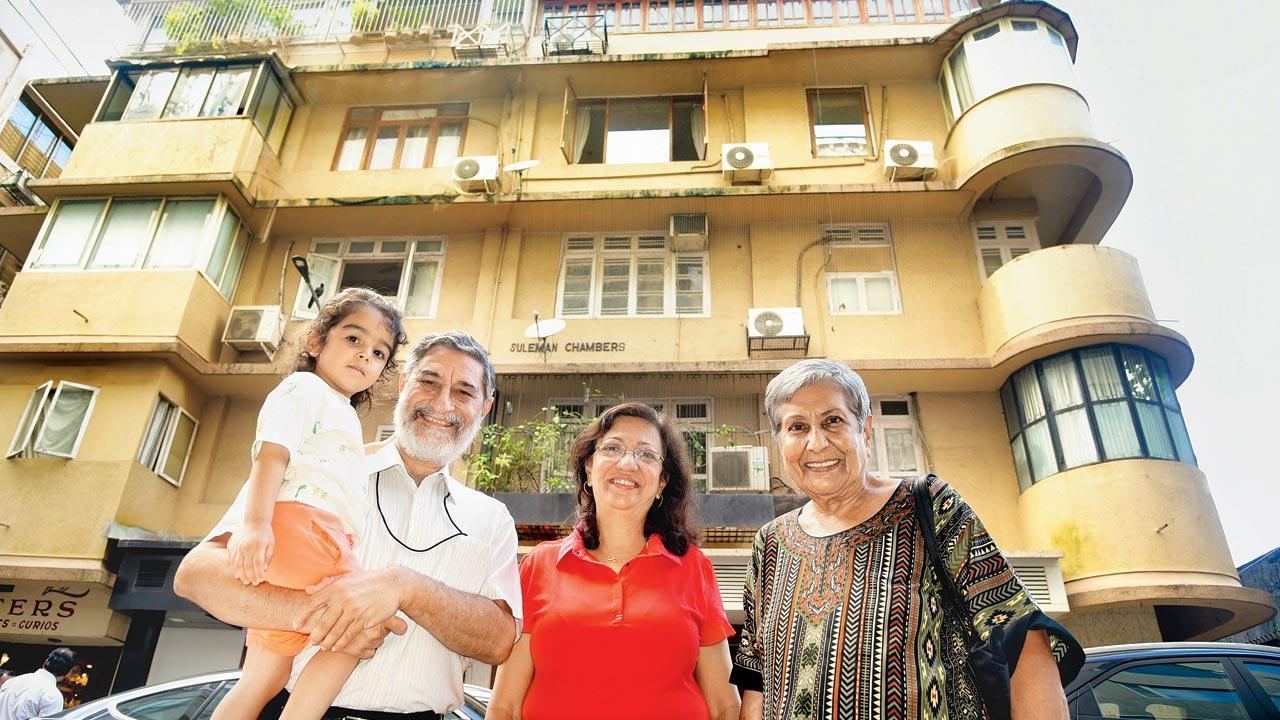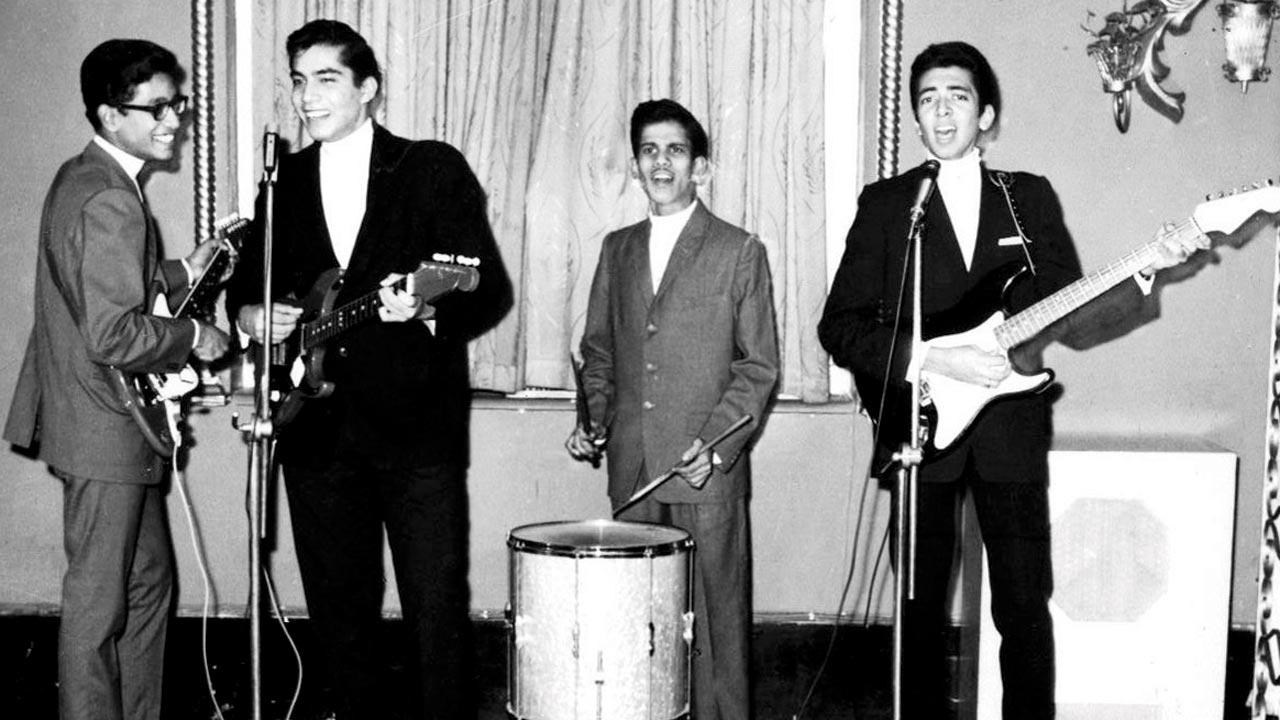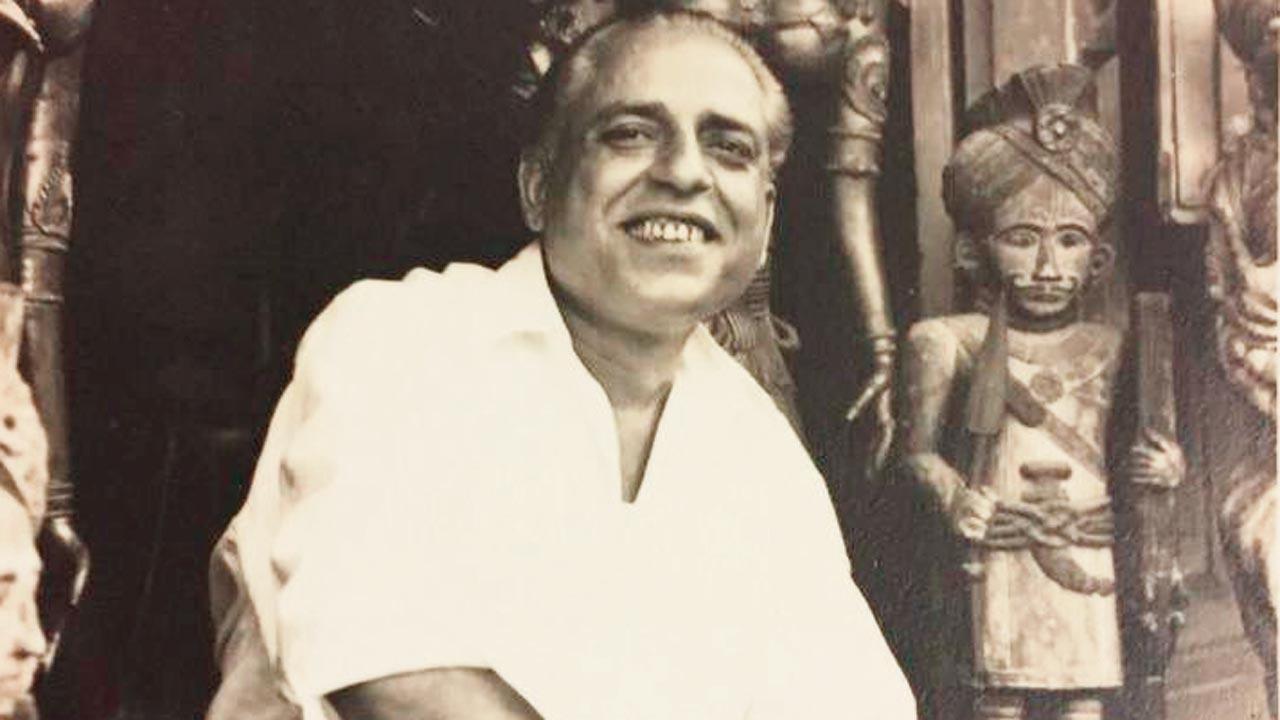Easy to miss, Battery Street in Colaba has a fast-fading past of great style and substance

Suleman Chambers residents, Banoo Kalantry (extreme right), Shernaz and Rustom Vakil with grandson Kyrus. Pic/Atul Kamble
 Woh kahaan?” is the invariable response to any mention of Battery Street. This short Colaba lane baffles delivery men and cabbies, till they reach “Regal ke peechhey wali gully”.
Woh kahaan?” is the invariable response to any mention of Battery Street. This short Colaba lane baffles delivery men and cabbies, till they reach “Regal ke peechhey wali gully”.
I’d be as perplexed, were it not for a wonderful 21st birthday gift from my journalism mentor Ammu Joseph: membership to the Centre for Education and Documentation (CED). Better known as Doc Centre, the library is situated on Battery Street’s Suleman Chambers, a building that rose about 10 years after the cinema did in 1933.
ADVERTISEMENT
CED soldiers on since shifting here on August 15, 1978, after three initial years on Waudby Road—its contents bundled on a pair of handcarts. More later, on this post-Emergency centre point for civil liberties and press activists.
 The Jets at Ambassador Hotel, 1965: (From left) Michael Kirby, Malcolm Mazumdar, Napoleon Braganza, Suresh Bhojwani
The Jets at Ambassador Hotel, 1965: (From left) Michael Kirby, Malcolm Mazumdar, Napoleon Braganza, Suresh Bhojwani
Connecting Apollo Bunder Road with Lansdowne Road, Battery Street is tucked left of and behind Regal theatre. It alludes to the defunct saluting battery on this stretch—a role undertaken today by the Navy’s Middle Ground Island Battery set up on a basalt rock reef just seaward of the Gateway. A black stone slab at the entrance to Suleman Chambers, drilled with large holes, indicates where some guns were possibly bolted in position.
Until the mid-1960s, Anglo-Indians, Europeans, Parsis and Goans dominated Colaba. Of the small clutch of buildings lining this lane—Suleman Chambers, Gordon House, Lansdowne House, Readymoney Building and Apollo Hotel Building—Suleman Chambers was the street’s heart and soul.
Valerie Junior and Darryl Kirby, who emigrated to New Zealand, are a couple offering vibrant recollections of their childhood home. “At the top of the Battery Street intersection with Apollo Bunder Road on your right, where the Shell Service Station is, was a lovely garden for Suleman Chambers residents,” Darryl mails from Auckland, where he is settled. “Too valuable to waste as a green oasis, the land sold by 1950-51. Ours was a sought-after address. As residents left, this Art Deco building ceased to get attention it richly deserved.”
 Oil on board painting of the Battery Street neighbourhood by Darryl Kirby
Oil on board painting of the Battery Street neighbourhood by Darryl Kirby
His wife Valerie elaborates: “We were a sociable bunch, going back to 1945 when my grandma’s family moved into two apartments in the then new building. With neighbours like saxophonist Hal Green and drummer Eddie Jones, plus my three aunts playing the piano, it didn’t take much for a Friday evening party to get swinging at grandma’s house. The next generation was us, the A-team as it were. We roller skated, rode bikes, hula hooped around our stamping ground. We won cricket matches versus the Dhanraj Mahal team.”
The mid-1960s dawned ripe for a second wave of young musicians on the block. Enter The Jets. Their name inspired by one half of West Side Story’s feuding gangs, three Campionites and a St Marian burst on Bombay’s beat scene. On lead, rhythm and bass guitar respectively, Michael Kirby (Darryl’s brother), Malcolm Mazumdar, Suresh Bhojwani performed with drummer Napoleon Braganza at Ambassador Hotel, Taj and Sun-n-Sand. Their bowler-hatted, frilly-shirted manager Ashok Daryanani still maintains a foothold in Suleman Chambers. “We hung out practising at the Kirbys’ Flat No. 31,” remembers Daryanani. “Playing in the city with an enormous appetite for western music was simply fantastic.”
Another Colaba boy yet to taste fame—Jabalpur-born, Dublin-bred, Nashville-star country singer Roly Daniels—joined the jam sessions. Though rock-and-ruling briefly, 1964 to ’66, The Jets’ sensational farewell show preview read: “Every teenager worth his Beatle wig makes a beeline to ‘Walk Don’t Run’ at Bhulabhai Desai Hall.”
 John D’Souza at the Centre for Education and Documentation. Pic/Sameer Markande
John D’Souza at the Centre for Education and Documentation. Pic/Sameer Markande
Suncity Apollo Hotel was Pyrkes Apollo Hotel and Restaurant in the 1950s, in Brightlands, the building to which Jia Oriental Kitchen has relocated. Rowed with Pyrkes Restaurant was its cake and chocolate shop. “Just down from that mouth-watering array, well separated from it, thank heaven, was a dingy, dark surgery with permanently closed doors. Through frosted glass windowpanes we’d see a solitary, dim light bulb. A white sign with black lettering announced, ‘Dr So-and-So, Sexual Diseases Specialist’,” laughs Darryl.
Rustom and Shernaz Vakil hospitably arrange for me to meet Daryanani at their apartment. Relatively recent residents, from the 1990s, Shernaz is admirably vigilant concerning the area’s civic issues. The Vakils introduce older neighbours. One being 80-year-old Banoo Kalantry. Her father Khodamurad Meherwan Afkham fled to his city of dreams as a 15-year-old peasant lad from Yazd. Sweeping the floor of New Majestic Restaurant below Capitol Cinema for R5 rupees daily, he ended up a partner at the cafe.
Across the road Readymoney Building, now Kalapesi Trust Building, is clad in an arresting hybrid of Renaissance-design elements with a vernacular wooden screened facade. It houses trusted arbiters of style, Heeramaneck & Son, and D Popli. Classily low-key, effortlessly elegant, the 1882 enterprise of Muncherji Heeramaneck clearly trumped purveyors of its ilk. Muncherji’s son Ardeshir’s keen eye for quality Mughal objets d’art and English hallmarked silver invited a discreet circle of connoisseurs.
 Dwarkadas Popli outside his family shop at Readymoney Building in the late 1960s
Dwarkadas Popli outside his family shop at Readymoney Building in the late 1960s
Ardeshir’s wife Perin and son Mehernosh extended the legacy to craft bespoke jewellery, commissioned by Parsi aristocracy to Twinkle Khanna for her wedding bijoux. The Heeramanecks enjoy regular patronage at the main premises in Readymoney Building and facing jewellery store in Suleman Chambers.
Back at Readymoney Building, D Popli was established as KC Popli & Sons in the 1920s. Karam Chand Popli of Rawalpindi, Punjab, sourced Kangra paintings and stone artefacts for customers. Karam Chand’s son Dwarkadas (D of the company name) expanded operations. Dwarkadas’ son Shashi and grandson Akshay continue attending to an exclusive clientele.
Glowing quietly alongside rare gems and illustrated manuscripts are the Popli fan files. A Diwan’s polite communication printed on the royal letterhead, assures his Maharaja’s position to pay pending arrears. A note from the office of the Royal Italian Consul General commends the “useful emporium with items interesting, valuable, moderate in prices”. A letter from Krishna Nehru Hutheesing, shopping for her brother Jawaharlal, complains the store does not open early enough every morning.
Capturing the old guard to au courant, stashed album pages contain photos of Calvin Klein, Donna Karan, supermodel Naomi Campbell, fashion maven Fern Mallis, Chris Martin of Cold Play and David Furnish, Elton John’s husband. “George Harrison also came when he was in Bombay,” adds Shashi Popli.
I recall a London Financial Times report on D Popli recommend: Look for the door with a D on it (no confusion with the Bathijas’ outlet bearing the same name next door) and don’t miss the espresso. Sipping a cupful which kickstarts flagging energy on that hot afternoon, I pore over a vintage image. With a Dodge taxi, Pontiac sedan and Ford van in the foreground, the Readymoney Building photo impressively represents the east street corner, mid-20th century. Behind these vehicles, the Naval & Military Stores & Restaurant sprawled right-angled, where The Table stands currently. Its Battery Street wall wore tall billboards of films at the Metro and Eros. In line is the original KC Popli & Sons signboard.
Hotel Suba Palace practically envelopes Readymoney Building. Mansur Mehta says, “Realising the 1970s Arab influx could make medical tourism big in Bombay, my grandfather Mohammed Mehta and father Abubaker started a guest house on the first floor. With demand increasing, so did the floors above. It turned Suba Palace from 1994. We’ve kept it completely clean, unlike the hanky-panky associated with many Colaba hotels.”
An early example of such dubious boarding houses-verging-on-bordellos stood at Gordon House. Splendidly named The Lady May Guest House, it earned popularity with sailors, notoriety with indignant residents. One of the latter might have been Mrs MA Price, a pillar of Wodehouse Church, on several of its committees. Ironic how her flat likely became the spot for Polly Esther, the disco at Sanjay Narang’s Gordon House Hotel.
“I’ve seen Hindi screen actors enter Lady May with their escorts,” Mohamedi Sham smiles knowingly, at the Essajees flagship store in picture-pretty Lansdowne House. Loyalists swear by his ancestral atelier’s antiques, furniture and art. The clan’s repute winds back to the 1890s, with Abdul Kadir Essajee accessing fine tapestries from Iran, expertly sourced jewels and priceless collectibles for rulers like the Nizam of Hyderabad. His son Saifuddin Sham, Mohamedi’s father, studied Indian bronzes and miniatures. “We sell with authenticity and have the guts to buy back,” says Mohamedi, whose experience has scaled up trading internationally. A fulfilling project Essajees undertook was restoring parts of the 26/11-damaged Taj lobby and chandelier.
We wish a broader restoration will save this street. D’Souza of CED rues its changing scape. “Like a charming Paris passage, covered arcades let pedestrians walk and talk with vendors. Archways are lost, eateries gobble footpaths, claiming jobs and activities of ordinary people between the interstices of these buildings.” CED’s long-time custodian and co-founder (with Pradeep Guha, Aspi Mistry and Ayesha Kagal among others, followed by screenwriter Anjum Rajabali), he explains, “When we began, the newspaper headed communications. The social media theme should remain conscious consumption and production. It’s vital to annotate, store and pass on for the future. Our centre encourages this in a digitally safe atmosphere, with media lab sessions, video work and shared posts.”
Power on, little library. Thanks for the introduction to Battery Street.
Author-publisher Meher Marfatia writes fortnightly on everything that makes her love Mumbai and adore Bombay. You can reach her at meher.marfatia@mid-day.com/www.meher marfatia.com
 Subscribe today by clicking the link and stay updated with the latest news!" Click here!
Subscribe today by clicking the link and stay updated with the latest news!" Click here!








